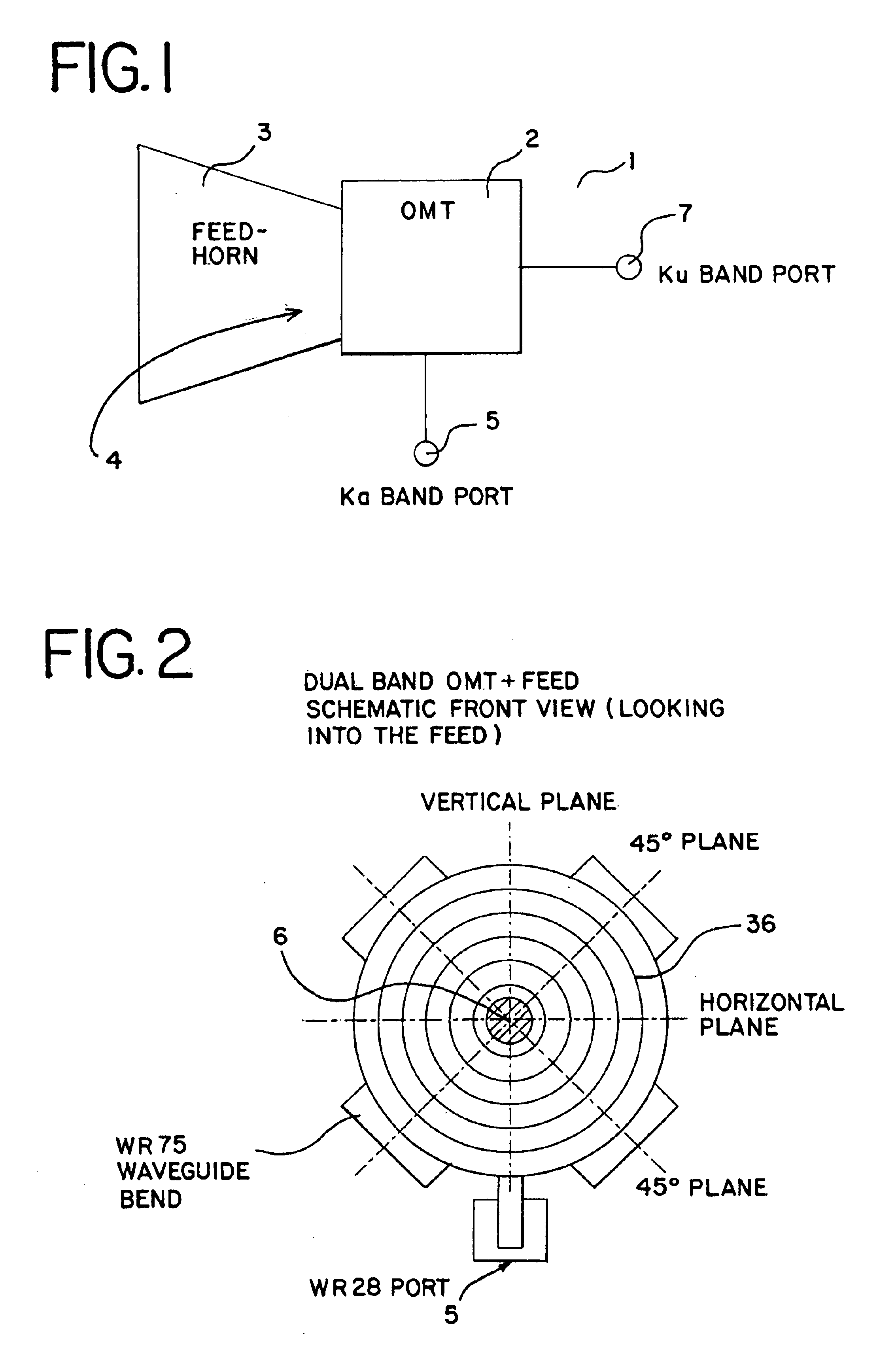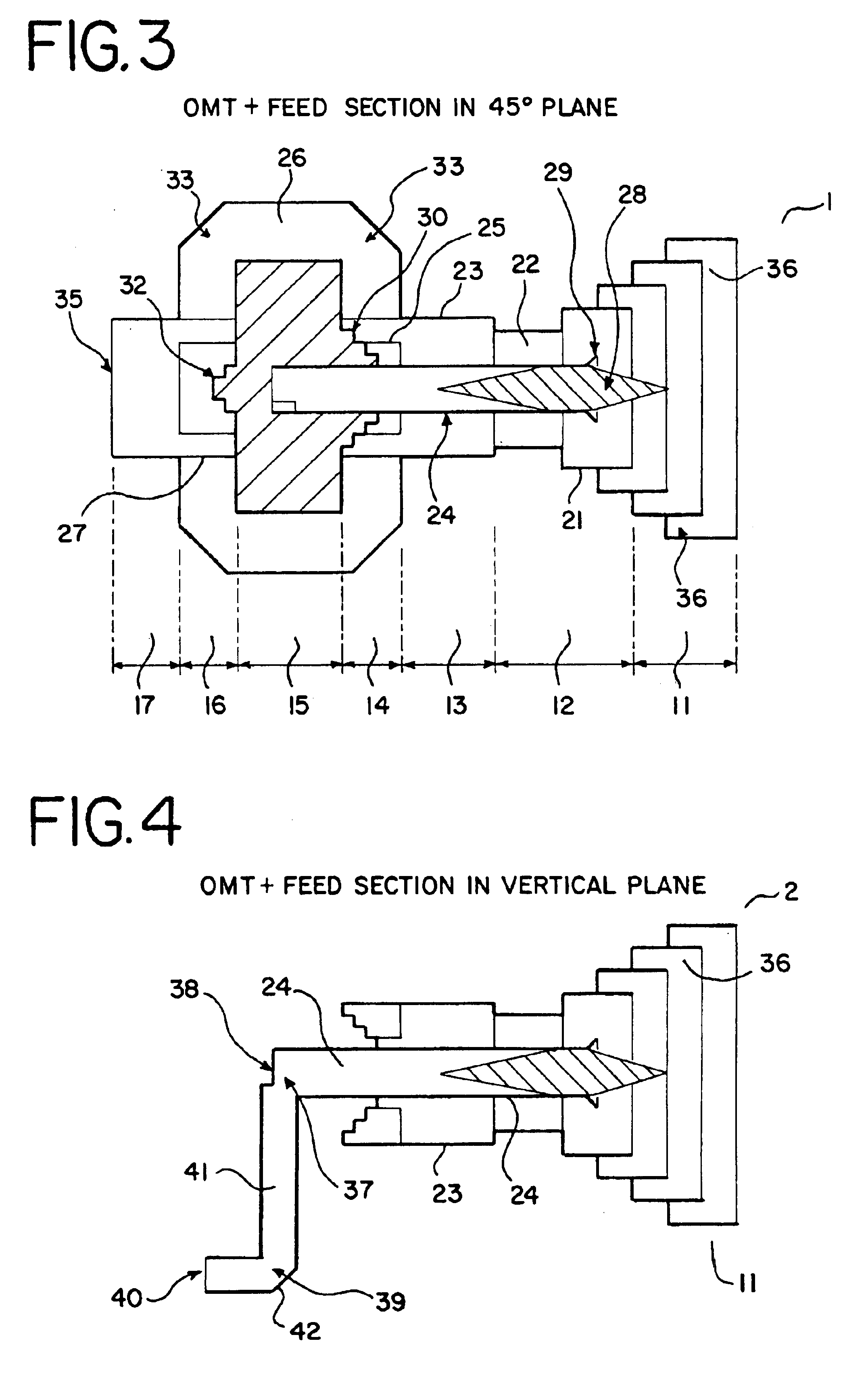Ka/Ku dual band feedhorn and orthomode transduce (OMT)
a dual-band, orthomode technology, applied in the direction of leaky-waveguide antennas, waveguide devices, electrical devices, etc., can solve the problems of complex joining and sealing surfaces
- Summary
- Abstract
- Description
- Claims
- Application Information
AI Technical Summary
Benefits of technology
Problems solved by technology
Method used
Image
Examples
Embodiment Construction
The present invention will be described with reference to certain embodiments and drawings but the present invention is not limited thereto but only by the attached claims.
FIG. 1 shows a schematic block diagram of an OMT and feed 1 in accordance with the present invention. It includes a feed horn 3 with feed aperture 4 and an OMT 2. The OMT 2 in accordance with an embodiment of the present invention is equipped with a first port 5 for a first frequency, e.g. the Ka band, normally used for (but not limited to) transmit and a second port 7 for a second frequency, e.g. the Ku band, normally used for (but not limited to) receive. Both ports 5, 7 preferably have standard interfaces allowing connection to a Ka band transmitter module and a standard Ku band LNB (low noise block downconverter) respectively.
FIG. 2 shows a schematic front view of the OMT and feed 1 as when looking into the feed aperture 4. This and the following figures present the case of the OMT and feed construction for ho...
PUM
 Login to View More
Login to View More Abstract
Description
Claims
Application Information
 Login to View More
Login to View More - R&D
- Intellectual Property
- Life Sciences
- Materials
- Tech Scout
- Unparalleled Data Quality
- Higher Quality Content
- 60% Fewer Hallucinations
Browse by: Latest US Patents, China's latest patents, Technical Efficacy Thesaurus, Application Domain, Technology Topic, Popular Technical Reports.
© 2025 PatSnap. All rights reserved.Legal|Privacy policy|Modern Slavery Act Transparency Statement|Sitemap|About US| Contact US: help@patsnap.com



